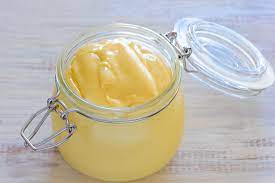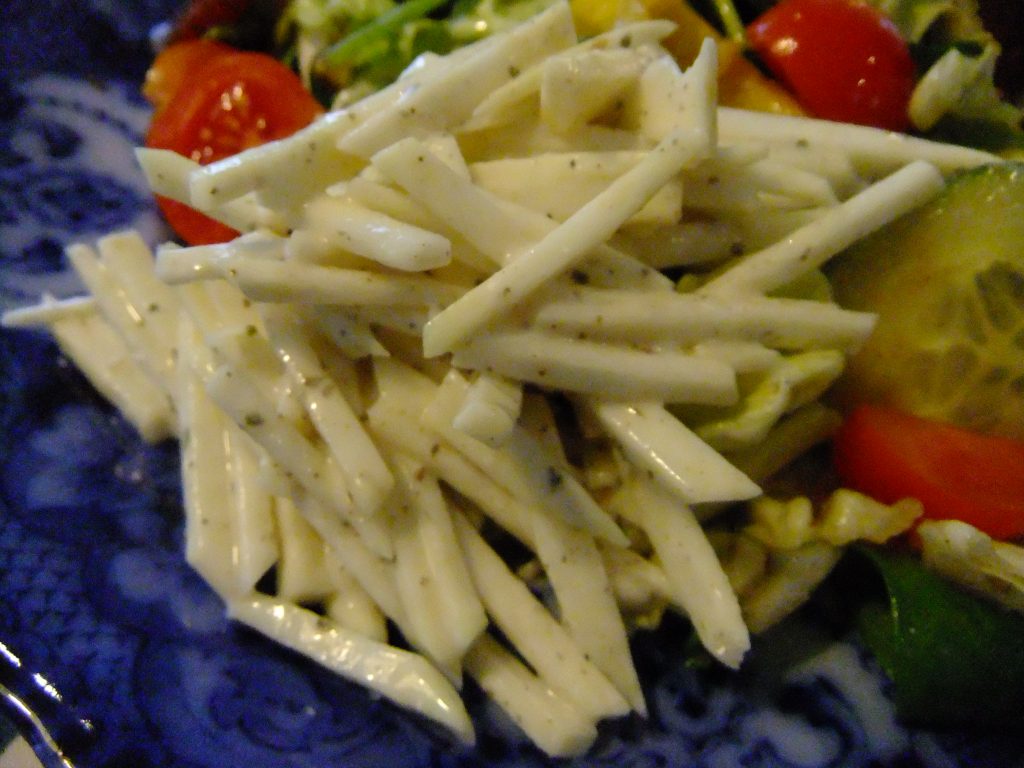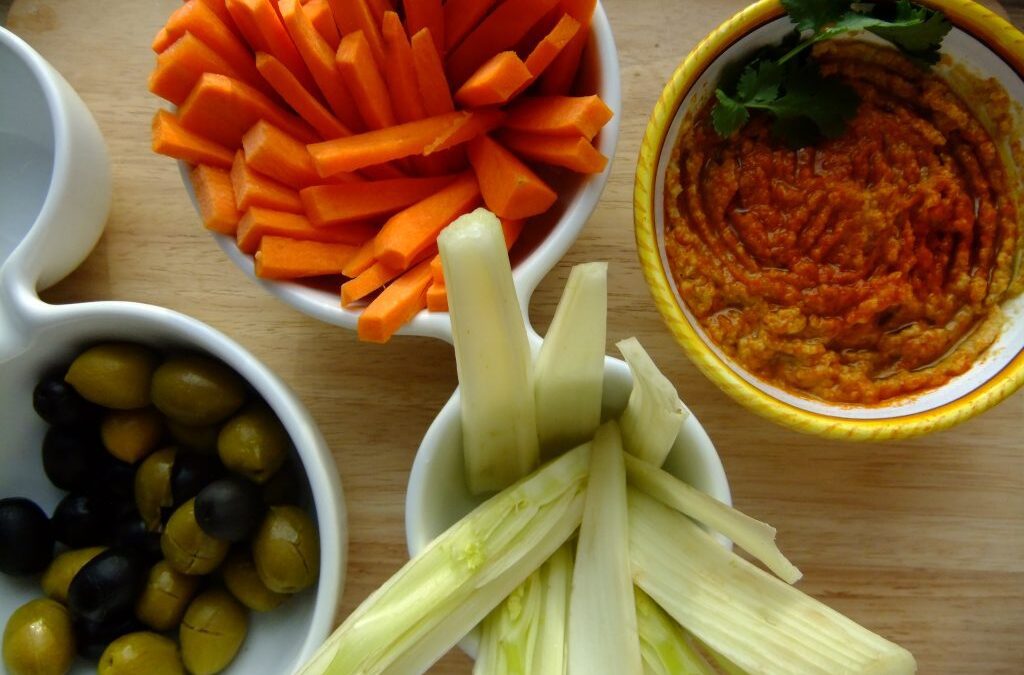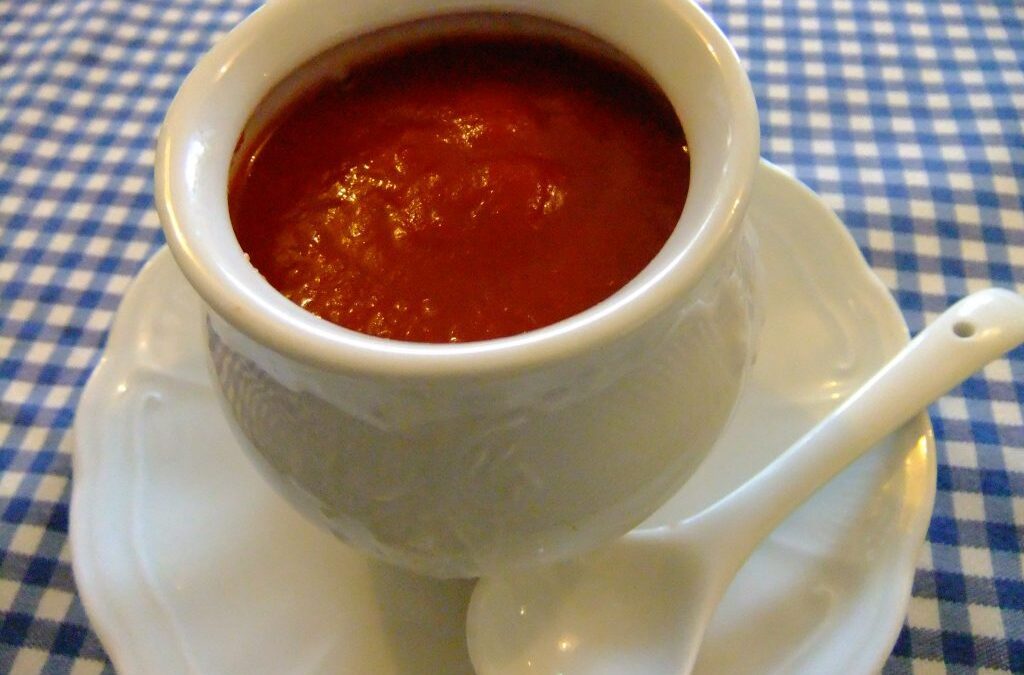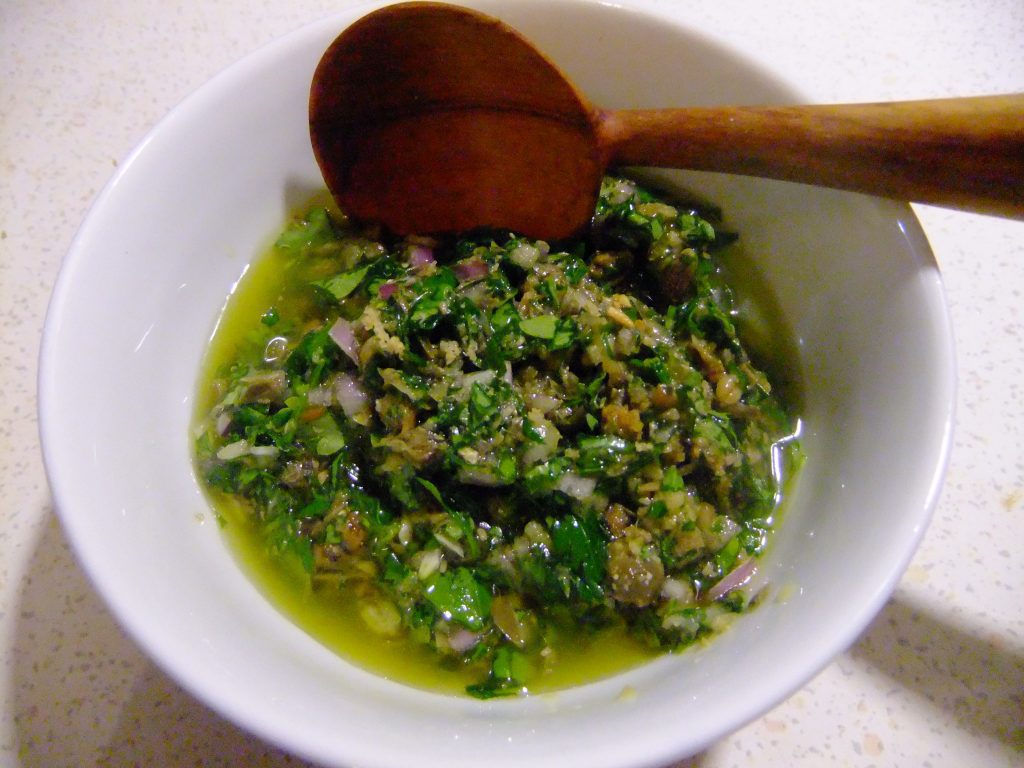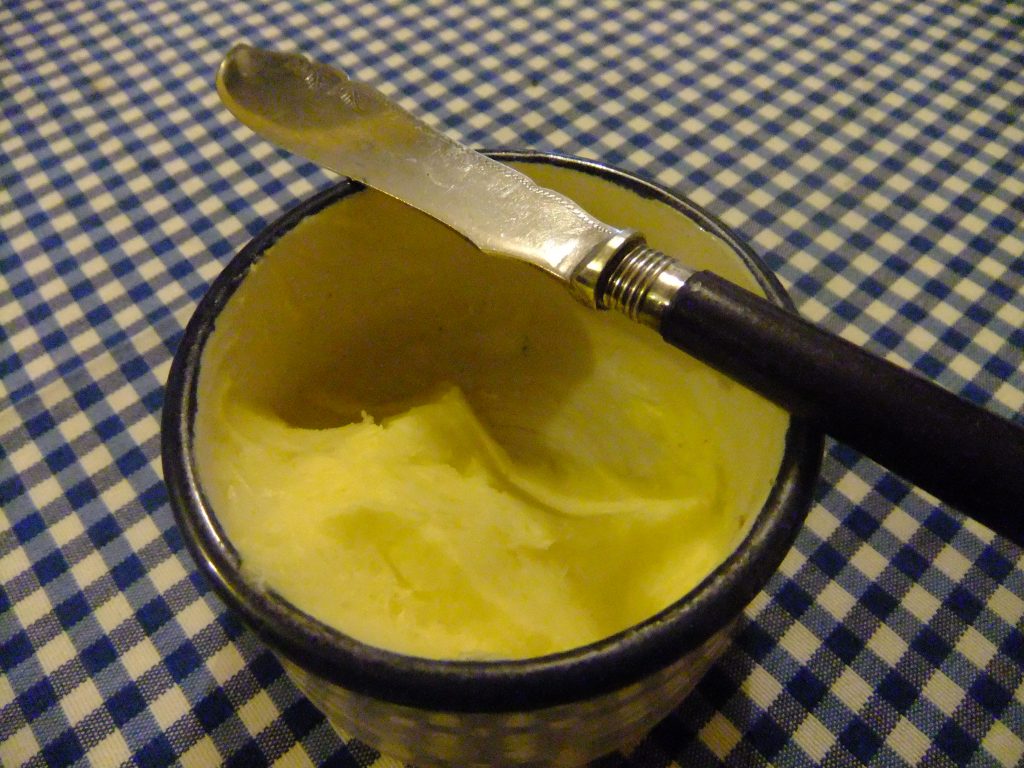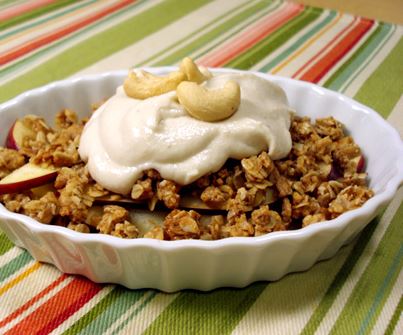
Jul 15, 2019 | Anna's Best Recipes, Dressings, rubs, spreads, sauces & more
I have to say this is the most delicious mayo recipe I have ever tasted. I so enjoyed it with steamed asparagus and a couple of boiled eggs for lunch today. Personally I like using a half and half mix of extra virgin sunflower/sesame and olive oils. Extra virgin sesame oil has a neutral flavour similar to sunflower, in my opinion. Nothing like the usual sesame oil, which is super heat-treated. Dijon mustard, salt and herbs preserve the mayo longer. When its gone over, you’ll know because it will have separated or gone runny. One yolk will bind up to 1 litre of oil so for a bigger batch you only need to increase the other ingredients.
1 medium/large organic egg yolk, at room temperature
1 tbs Dijon mustard, at room temperature
230ml extra virgin (cold-pressed) oil: olive, rape, sunflower or avocado
1 dsp apple cider vinegar or lemon juice
Himalayan salt
Pepper
Optional: 2 tablespoons herbs to add at the very end: e.g. fresh chopped tarragon,parsley, coriander or chives.
- Bring the egg and mustard to room temperature in advance (chilled eggs/Dijon will leave you with a runny, disappointing sauce!).
- Mix the egg and mustard with a stick blender or whisk and while whisking add the oil slowly in a thin stream (this is essential). The mayo should start to thicken. Many food processors now have a cap on top that has a small hole for this purpose.
- Continue whisking and adding until the oil is used up and the mayo is set.
- Add vinegar/lemon juice. Mix some more and season with salt and pepper and whatever herbs you are using.
- Let the mayonnaise rest in the fridge before serving – this allows the flavour to develop and the mayonnaise to thicken further.
Why this is better for you:
As you’ll know if you’ve been a client of mine, omega 6 oils in the form most people eat them, are toxic. Omega 6 oils like sunflower, rape, safflower, sesame, canola, soya and “vegetable oil” are heat treated to give them a long shelf life. This makes their chemical structure change to one that interferes with metabolic functions as they are incorporated into our cell membranes in EVERY tissue of our body. They are used as cooking oils, and to make bread, cakes, biscuits and confectionary and of course in ready meals, to give them a nice mouth feel.
So if you’d like to avoid or reduce chronic health conditions, swapping out your heat-treated nut and seed oils for healthier options is a winner. For food prep use either extra virgin olive oil or (never cooked) extra virgin nut/seed oils like sesame, sunflower, rape, walnut and hazelnut. Commercial mayonnaise is ALWAYS MADE WITH REFINED OILS (if you find one that’s not, do let me know so I can tell everyone!). Bottom line, we are all deficient in these life-giving untreated, never heated, omega 6 oils. DID YOU KNOW that mustard can be a powerful tool against eczema (dermatitis)? A study a few years ago showed that eating mustard daily prevented eczema in mice. Who knew??

Feb 12, 2018 | Anna's Best Recipes, Breakfasts & smoothies, Dressings, rubs, spreads, sauces & more
Made these a few weeks ago and thought I’d better get them up here in time for Pancake Tuesday. They are thicker than normal pancakes and really light. I love to eat them for a weekend breakfast with a dairy-free coconut yoghurt and lots of thawed mixed berries. Mix a few drops of pure stevia with yoghurt or berries if you like them sweeter. Being a bit greedy, I made double quantity here but it was too much. The coconut flour and eggs make these protein rich to give you slow burn energy.
For 4 pancakes to serve 4
(with a generous serving of berries and maybe some coconut yoghurt)
45g coconut flour
1/2 teaspoon vanilla powder or 1 teaspoon vanilla extract (if you are gluten-sensitive avoid vanilla essence)
1 medium banana (with spots if you are on SC diet)
6 medium eggs
1/2 level teaspoon Ceylon cinnamon
- Blitz everything except the coconut flour in a blender until mixed up and no lumps.
- Add the coconut flour, blitz till mixed.
- Heat frying pan on medium heat, add a little coconut oil. Use 1/4 of the batter for each of the pancakes.
- Serve with the yoghurt and berries.Variation: This is also lovely with apple stewed with Ceylon cinnamon.

Nov 12, 2015 | Anna's Best Recipes, Dressings, rubs, spreads, sauces & more, Sides, starters, soups & snacks
Try this as a side instead of potatoes with some grilled fish and green veg. We had it last weekend with gorgeous meaty (nitrite-free) sausages and steamed broccoli drizzled with extra virgin olive oil. The sausages came from Coolaknowle Organic Meats https://organicmeat.ie/ at the Green door Market in Dublin on Fridays and Saturdays. All their meats are fantastic quality and none contain nitrites. They also do a really good gluten-free sausage that’s high meat content and of course, also nitrite-free. I LOVE the Green Door Market – so many fantastic food producers under one roof. Saturday is THE best day https://www.thegreendoor.ie/
For 4 servings:
One small celeriac
2 tbs thick homemade kefir, natural yoghurt (if you are on the SC diet, the kefir or natural yoghurt need to be home-made) or creme fraiche
Juice of half a lemon
2 dsp Dijon mustard
Plenty of freshly ground black pepper
A pinch of Himalayan/Atlantic sea salt
1. Peel the celeriac (you’ll need to cut off anything knobbly).
2. Coarsely grate or cut into thin batons (about 2mm thick) or julienne strips (you could also use a spiraliser and use the “noodle” attachment).
2. Combine with all the other ingredients and mix well.
Serving idea:
Drape with smoked salmon and serve with a mixed salad.
Why this is better for you
Celeriac is lower in carbohydrates (sugars) than potatoes so it’s a much healthier choice for anyone who cares about their waistline, their digestive health or their ability to look younger for longer. Mustard helps reduce inflammation. An interesting recent study showed a marked improvement in eczema when mustard was added to the diet of mice with the inflammatory skin condition. And of course celeriac is free of disaccharides, the sugars that anyone with active Crohn’s or ulcerative colitis cannot digest.

Apr 30, 2015 | Anna's Best Recipes, Dressings, rubs, spreads, sauces & more, Sides, starters, soups & snacks

Middle Eastern tahini dip with crudites
This is based on a Sophie Grigson recipe I loved, but lost. My husband says this version is the best of my attempts to recreate it. It’s dead simple. Enjoy with strips of red pepper, carrot, cucumber or celery and maybe a few olives. Dips with veg sticks before a main course are a great way of encouraging your kids to eat veggies too – take advantage of them being hungry!!
For a smoother dip use normal tahini made from roasted sesame seeds. For a coarser (and even more vitality boosting) dip use raw tahini (e.g. Carly’s) from health shops. Raw seeds retain their beneficial oils to do your body even more good. If you’re not going to use this dip within half an hour or so, store in a small screwtop glass jar or else a small glass/ceramic container with clingfilm over the top (but not in contact with the dip itself) to stop it drying out.
To make this dip into a sauce add a little more water to thin and drizzle over cooked white fish or felafels.
To serve 3-4 as a starter
2 cloves garlic
2 level tbs dark tahini
1 1/2 tbs lemon juice
1 dsp extra virgin olive oil
1 level tsp cumin
Pinch Himalayan or Atlantic sea salt
Pinch cayenne pepper
4 tbs water
Mini food processor method:
1. Crush the garlic and throw it and the rest of the ingredients into a mini food processor.
2. Blend for a couple of minutes, scraping down the sides of the processor a few times to get everything well mixed.
3. If you have time, allow to sit for half an hour for the flavours to amalgamate.
Traditional method:
1. Crush the garlic and place in a mixing bowl with everything except the water.
2. Mix well with a wooden spoon, then add half the water. The tahini will become quite stiff at this point, just keep mixing and it will start to relax and absorb the water.
3. Mix well, then add the rest of the water and work till smooth. This will be a more rustic mix than using the food processor. If you have time, allow to sit for half an hour for the flavours to amalgamate.
NB. If you are on a ketogenic eating plan, avoid eating more than 1/2 cup raw carrots in the day. Like all root veg, they are rich in sugar and too many will derail your programme.
Why this is good for you:
Garlic is a fantastic booster for your whole body. It kills yeast infections and overgrowths of pathogenic (“bad”) bacteria in your gut. This is good news if you want to sort out your digestion or achieve beautiful skin. Garlic’s sulphur compounds also support your liver to clear chemicals, used-up hormones and other toxins out of your body. Skin conditions are usually largely due to problems in the digestive system. Sort those out and you have dont more than 90% what you need to do. If you are not used to eating garlic, especially raw garlic, start with a little and gradually build up. Garlic is in my top 10 vitality boosting foods. Spices like cumin and cayenne pepper also have great benefits – anti inflammatory, anti-ageing and more. Have you had your spices today?

Mar 6, 2015 | Anna's Best Recipes, Dressings, rubs, spreads, sauces & more

Mint pesto
A blob of this will turn your just-grilled or baked fish or chicken and some steamed vegetables into a feast. It’s also lovely on a plain oatcake with (if you eat dairy) a few crumbled pieces of goat/sheep feta cheese on top. You could also stir it into humous, to make it extra fancy. Once of the things I love about these home-made pestos is they last a LOT longer than if you just leave the fresh herbs in the fridge. The garlic and virgin olive oil in this one help preserve the mint. My batch lasted 10 days in the fridge. Don’t forget to cover the pesto in a layer of olive oil in the jar – this stops the air from making it go brown. If you prefer, use all walnuts, or a mixture of seeds such as pumpkin and sunflower, to make the pesto.
30g almonds
15g walnuts
1 clove garlic, crushed
40g mint leaves (about 1 big bag)
20g parsley, stalks removed
Juice of 1/2 a lemon
2 tbs extra virgin olive oil, plus extra for covering
1. Blitz everything together in a mini food processor until it’s as smooth as you like it. Personally I prefer it a bit “rustic” so I often blitz everything except the nuts, until smooth, and only add the nuts at the end, to retain a rough texture. If it’s too thick for your liking, add a bit more olive oil.
2. Decant into a clean screw top glass jar. If you are not going to use this straight away, add a layer of olive oil on top to stop everything going brown. Store in the fridge for up to 10 days.
Why this is good for you:
Mint helps soothe your digestive system and reduce gas (flatulence!). It suppresses pathogenic (disease-causing bacteria) in your gut and also in your mouth (for fresher breath). Garlic has similar anti-bacterial properties and preferentially encourages good bacteria to multiply. This is all good news for anybody who wants to get their digestive system into tiptop shape, who has skin problems, or who has any inflammatory conditions. Garlic also helps support good liver function which is a cornerstone of having good skin. Raw extra virgin olive oil is a rich source of vitamin E. Vitamin E “recycles” vitamin C as an antioxidant in your body, making it more effective. Vitamin E is natures moisturiser and skin smoother. It also helps reduce your tendency to allergies such as allergic dermatitis, hives, hay fever or food sensitivities. Vitamin E helps keep your skin younger longer too.

Aug 7, 2014 | Anna's Best Recipes, Dressings, rubs, spreads, sauces & more, Sides, starters, soups & snacks
This unctious, tangy pesto is one I’d call a real crowd-pleaser and people will think you spent hours making it! Today we grilled some salmon darnes and had a huge dollop of this on the side with some steamed veg for a quick weekday dinner. The pesto keeps for about a week in a clean airtight glass jar in the fridge. It is fantastic served with some steamed carrots/pak choi/spinach/courgettes and a grilled or steamed piece of fish or chicken. For a snack or decadent breakfast spread it thickly on some wholemeal gluten-free or (if you eat gluten) 100% rye 100% sourdough toast with perhaps some sliced tomato (and a little crumbled goat/sheeps feta chees if you eat dairy) on top.
For a generous jar with 6 servings
4 small green chillies, stalks removed (optional)
100g fresh coriander, stalks and leaves, washed and cut up in 2-3cm lengths
25-30g organic raw pumpkin seeds or half pumpkin half sunflower seeds (you could also use almonds or walnuts if you don’t have any seeds)
2 large cloves of garlic, peeled and roughly cut up
Extra virgin olive oil (about 150ml)
Pinch of Himalayan/Atlantic sea salt
Juice of 2 limes (or use juice of a lemon if you cant get limes)
1. Combine all the ingredients except the olive oil in a food processor, grind until smooth.
2. Add the olive oil as you go until you achieve a thick, consistency. If you want a pouring consistency, add more oil.
Why this is good for you:
Fresh coriander binds to toxic metals in your gut and gets them safely out of your body. So if you have mercury dental fillings, for example, this is a great thing for you to eat. Coriander and lemon juice have antioxidant, anti-inflammatory properties to keep your skin clear, younger and fresher longer. Lime or lemon juice also aids digestion at mealtimes. As many people struggle to make enough digestive juice to fully break down their food, it can be a helpful addition to a meal. Garlic helps kill gut infections such as candida overgrowth and parasites, which are REALLY common, even in Ireland! But garlic also encourages growth of beneficial bacteria in your gut. Harmful candida and parasites cause many digestive problems, skin disorders and even mood problems that I make dealing with them a priority in nutrition clinic. Extra virgin raw olive oil is also packed with antioxidant vitamin E, which helps reduce your tendancy to allergy as well as moisturising your skin from within. Eating this pesto helps balance your gut bacteria in favour of the good, helpful ones.

Apr 16, 2014 | Anna's Best Recipes, Dressings, rubs, spreads, sauces & more
Anyone out there a ketchup-fiend? It’s really easy to make this good-for-you version. I can guarantee it’s as delicious as the normal sugar-laden version as I’ve just tasted it. The recipe comes from Dr Natasha Campbell-McBride’s book “Gut and Psychology Syndrome” that has helped so many children with autism to develop more normally, and live happier, healthier lives. She in turn got the recipe from Elaine Gottshall, who wrote “The Specific Carbohydrate Diet” which has transformed the lives of many people with Crohn’s disease and colitis. FOR AN INSTANT NO-COOK VERSION I SOMETIMES USE TOMATO PUREE INSTEAD OF JUICE/PASSATA (SEE NO 3 BELOW FOR INSTRUCTIONS)
2 cups tomato juice (or 1 1/2 cups passata or sieved tomatoes, which I used as its handier – it gives a grainier texture which I like)
1-3 tbs white vinegar
honey to taste
bay leaf (optional)
Pepper and Atlantic sea salt/Himalayan salt to taste
- Mix all the ingredients except the honey and simmer on the stove until thick, stirring often to prevent sticking. when almost the desired thickness, add honey to taste and complete cooking.
- Ladle into sterilised jars and seal immediately or place in small containers and freeze.
- EXPRESS VERSION: mix tomato puree from a tin with 1 tbs apple cider vinegar, a little honey to taste and away you go – this won’t keep for as long but should last at least 5 days in the fridge.
To sterilise jars and lids, boil in a saucepan with plenty of of water, with a lid on, for at least 15 minutes – don’t put hot food into cold jars, or cold food into hot jars, or they will shatter. For other ways of sterilising jars try this site: http://britishfood.about.com/od/glossary/ht/sterilizingjars.htm
Why this is better for you:
Instead of being loaded with refined sugar or additives, this ketchup is sweetened with honey, which is less harmful for people with digestive difficulties. People with damage to their small intestine (like children with autism, people with food intolerances or digestive disorders, or who take non-steroidal anti inflammatories or antibiotics) often cannot digest certain sugars. In particular, disaccharide sugars are a problem for these people, who do not make enough digestive enzymes in their intestines. Eating these types of sugars, which occur in many foods (e.g. sugar, grains, potatoes) causes worsening of symptoms. Unlike refined sugar (a disaccharide), honey contains only simple sugars, which are easy for the body to absorb, even without the aid of a healthy digestive system. For this reason, this ketchup is allowed on the GAPS diet (see book above). The GAPs diet has been used to help people with dyspraxia, ADHD, dyslexia, depression and even schizophrenia.

Mar 19, 2014 | Anna's Best Recipes, Dressings, rubs, spreads, sauces & more
I like to keep weekday dinners really simple and sauces like this are my way of make even the simplest grilled fish and steamed vegetables gorgeous. This is a bright green and pink sauce that’s great for adding flavour to simple grilled, steamed or roast fish or chicken. You could also use it to liven up hardboiled eggs, or even stir it into some cooked butter beans, chickpeas or white haricots to create a filling salad. If you like pungent, slightly salty, earthy flavours you will love this. And of course the garlic and herbs are a vitality-booster.
Makes 1 jar (to serve 6)
Large bunch flat-leaf parsley
Small handful of basil leaves, if available
3 anchovies (the brown, salted kind if possible, instead of the vinegary white ones)
1 large clove garlic (or 2 small) peeled and crushed or finely chopped
1/2 tbs finely chopped shallot (or red onions)
Optional: 1 heaped tbs gluten-free wholegrain breadcrumbs (if you are not gluten intolerant use sourdough wholemeal breadcrumbs) – the crumbs thicken the sauce – personally I don’t care whether it’t thickened or not so I never bother.
1 tbsp capers (or 2 if you want) – squeeze out some of the vinegar before using or, better still, buy salted capers and simply rinse off the salt before using)
Extra virgin olive oil, as high quality as you can manage
- Remove the thick stalks from the parsley and chop it and the basil as finely as you can manage. Place in a bowl.
- Chop the anchovies and the capers finely and add to the bowl, along with the garlic, breadcrumbs, chopped shallot/red onion and capers. Add enough olive oil to almost cover everything and mix well.
- If you have time, leave this for 20 minutes or more for the flavours to amalgamate before serving. Or serve a dollop on top of some simply-cooked chicken or fish straight away. This will keep in a small airtight jar in the fridge for several days but basil does discolour once chopped. So you might only want to chop enough basil for what you will use the same day.
Why this is good for you:
Raw extra virgin olive oil is a fantastic source of vitamin E. Vitamin E is in fact not just one substance, but a collection of different compounds (tocopherols and tocotrienols) that occur naturally in foods. You need vitamin E for beautiful smooth skin and for helping your body repair and maintain itself inside and out to stay younger longer. Its also crucial for a healthy libido! Garlic supports liver function for clearing both natural and man-made chemical toxins out of your body. Garlic thins your blood so can reduce high blood pressure naturally. It’s also a food that helps kill gut infections and also encourages the growth of good bacteria. Parsley helps support your immune system, your kidney and bladder function and also helps kill the smell of garlic on your breath. Its rich in vitamin C, which reactivates vitamin E in your body. Parsley also calms your digestive system and can reduce gas.

Feb 13, 2014 | Anna's Best Recipes, Dressings, rubs, spreads, sauces & more
Something really simple for all you food-lovers this week. Amazingly, this good-for-you buttery spread looks and tastes great. Spread it on bread, toast, crackers. I love to eat toast smothered with this spread alongside baked beans for breakfast from time to time. It’s not a good idea to cook or bake with this spread as the delicate flax oil (like all polyunsaturated nut and seed oils) generates (nasty) trans fats when cooked. Pure coconut oil would be fine to cook with, though, as it can’t produce trans fats.
The spread keeps in the fridge for at least a month. Adding a little natural salt changes this from something that tastes “worthy” to something delicious.
3 parts extra virgin coconut oil (warm it slightly by placing near a radiator or sitting the jar in hot water so it’s easier to get out of the jar)
1 part virgin cold-pressed flax (linseed) oil
A pinch of Atlantic Sea Salt or Himalayan Salt (from health shops and delis)
Or (if you can get it) a pinch of onion salt which gives a fantastic flavour.
Sourcing and Storage:
Buy the oils from health stores and make sure the flax oil has been kept refrigerated in the shop. Biona, FMD and Viridian are three high-quality brands of flax oil. Flax oil must be kept refrigerated in order to maintain its health benefits.
See “larder & shopping” for stockists
- Blitz the ingredients together in a small food processor or spice grinder. If you don’t have a gadget and want to do this by hand, make sure the coconut oil is a little softened by placing the jar in hot water for a while before whisking the coconut oil along with the flax oil (never heat flax oil).
- Pour into a small ceramic or glass (not plastic) bowl. It will be a bit runny but will firm up in the fridge.
Variation:
If you prefer your spread softer, then use slightly more flaxseed oil in the mix. Bear in mind that it will firm up in the fridge.
Why this is great for you:
Virgin coconut oil is a rich source of medium chain triglycerides (MCTs). MCTs are used by your body as an almost instant source of energy but are not stored as fat. Good news if you want to boost energy AND lose weight. Coconut oil is also anti-fungal so helps keep overgrowth of yeast in your gut in check. Virgin flax oil contains omega 3 oils which are also good for you, helping keep your blood thin and your immune system healthy. Virgin cold-pressed oils, provided you keep them in the fridge in an airtight container, are great for you and free from toxic -trans fats. Trans fats are found in all heated or refined polyunsaturated oils. Refined oils are any NON cold-pressed nut/seed/vegetable oil or one that has been heated by you to a high temperature by frying. Coconut oil is not polyunsaturated and so cant generate trans fats. Olive oil is monounsaturated so can be damaged by heat but not as much as the nut/seed oils. All well-known margarine brands are made from refined vegetable oils which contain harmful trans fats. Make sure not to put this or any other fat-rich foods in plastic containers. This is because plastic contains bisphenol-A (BPA). BPA is used to lend flexibility to plastic and it is a hormone-disrupter. BPS leeches out of the plastic into the fats in contact with it. Scientific studies link BPA to hormonal imbalance, hormonal cancers, osteoporosis, weight gain, diabetes and more. If you can buy polyethylene “PET” containers instead of plastic, these are free from BPA.

Dec 19, 2013 | Anna's Best Recipes, Desserts & drinks, Dressings, rubs, spreads, sauces & more
I love this with Christmas pud or mince pies. This is a brilliant substitute for dairy cream and is naturally sweet. You want a mini food processor or a spice/coffee grinder to make this easily. I think these 2 gadgets are the best pieces of kit you can get for your kitchen if you want to eat lots of easy-to-prepare interesting and healthy food. Alternatively a mortar and pestle and a lot of effort would work. This “cream” keeps for at least 3 days in the fridge, covered. If it dries out a bit, just add a little water and mix well to smooth it out.
3 servings
½ cup unsalted unroasted cashew nuts
1 cup filtered water
A few drops of vanilla extract
Grinder or pestle-and-mortar method (for an even smoother consistency):
- Do not soak the cashews but grind finely, then beat in the water and vanilla essence with a whisk.
- If you want it thinner add more water, thicker add more ground nuts.
Mini food processor method:
- Soak cashew nuts overnight in the cup of filtered water
- Blitz all ingredients in a miniature food processor until it reaches a creamy consistency. Add more water to thin if you like.
Tip: You can make a similar “cream” using soaked and peeled almonds.
Why this is good for you:
Cashew nuts contain some protein and beneficial fats which help balance blood sugar, reducing the tendency to binge eat.. This is particularly great if you are serving with mince pies, plum pud or other high carb foods. Cashews are also rich in magnesium, which helps keep mood chilled, spirits high, blood pressure normal and much much more. People need lots of magnesium-rich foods at Christmas, when alcohol, white flour and sugar deplete this nutrient.
